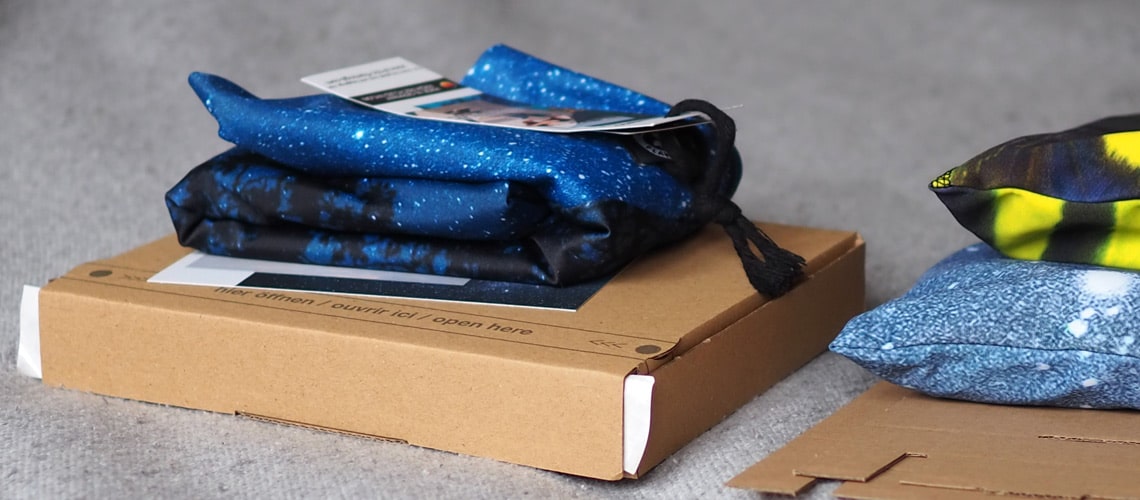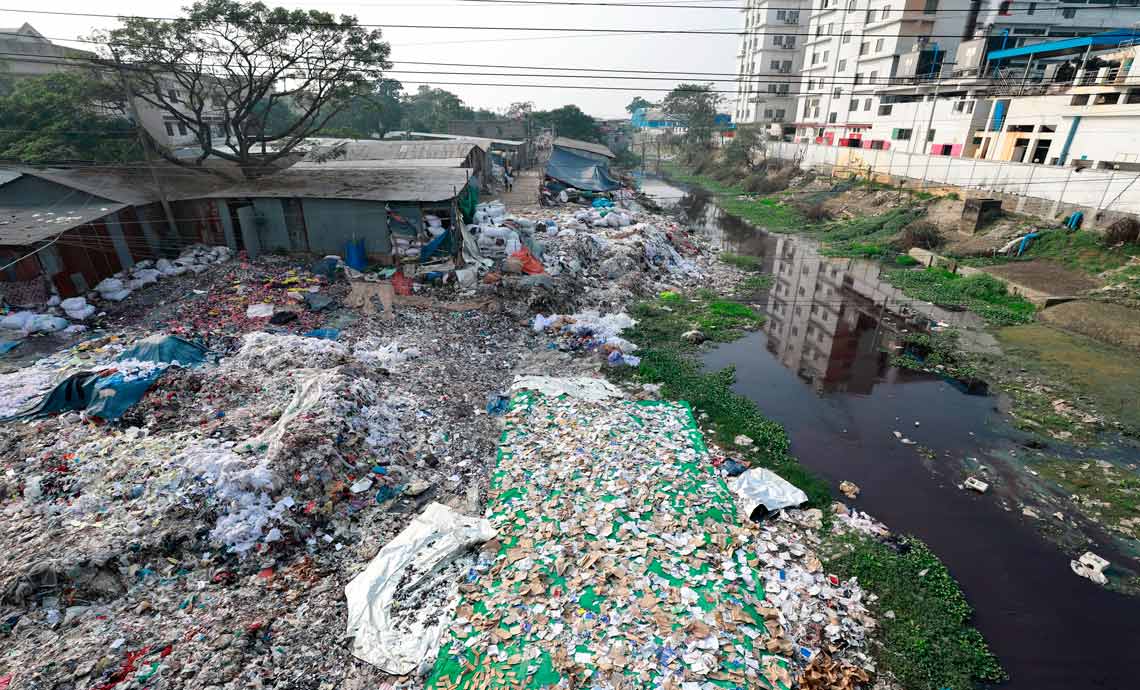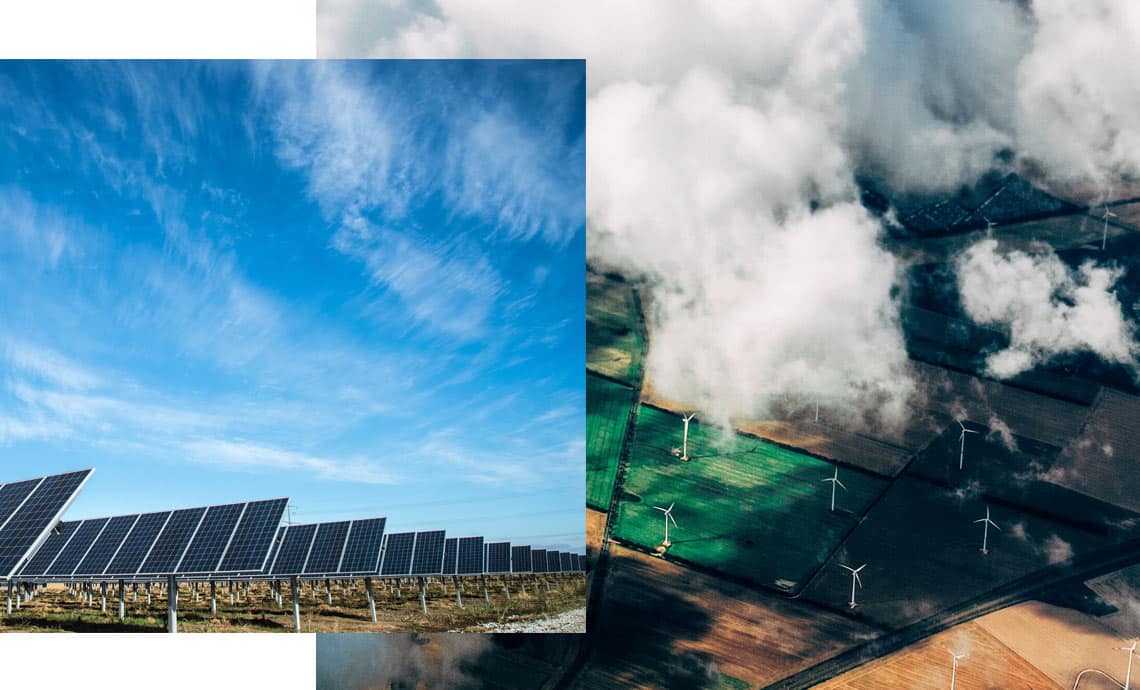You would like to shop eco-friendly yoga leggings but you are not sure what makes a pair of leggings sustainable. We have 2 most important tips for you!

A list about things you should pay attention to when shopping eco-friendly yoga clothes. These are:
– What is the fabric that the leggings are made from
– Where is the factory located where your leggings are made
Discovering the material and production country of your yoga clothing is easy with a simple glance at the care label. Unfortunately, determining the country of origin can be difficult while shopping online. However, reputable brands that prioritize ethical and sustainable practices will often mention the production country also in their online shop. Keep an eye out for this important information while making your next purchase.
– How are the leggings dyed and how the waste water is handled
– What are the working conditions in those factories
– Are the workers who make your leggings paid a fair wage
– Are your leggings high-quality or do they fall apart after few wears
– Does the company offer you a way to recycle or repair your garment
– How transparent is the yoga clothing brand you purchase your clothing from
Let´s have a closer look what you should check before you purchase eco-friendly yoga leggings:
Location of Production
The location of factories and suppliers is important – a sustainable supply chain is actually even more important than the sustainable end product. In the worst case, the leggings can be made in one country, with the fabric coming from another, then dyed in a different country all before getting shipped to the destination country to be sold. Obviously it´s more environmentally friendly if the transport between fabric manufacturing, dying, sewing, selling country is as short as possible and nothing needs to be transported overseas. If the yoga clothing brand works transparently, they explain this all to you, so you know exactly where your yoga leggings come from.
The number one practice of all truly eco-friendly yoga brands is transparency. Companies who practice green methods are pretty proud of it, and will announce it to their customers.
Material
The most obvious way to pick more sustainable yoga leggings is to take a look at the materials. Start by checking product labels and website descriptions. Most yoga leggings that claimed to be eco-friendly are made of natural materials like organic cotton, bamboo viscose, lyocell or organic cotton blended with other fibers. Because activewear is expected to perform and have functionality synthetic materials like recycled polyester (also PEP) or nylon (also called polyamide) are very commonly used in yoga leggings and tops. The fabric can also be a blend of natural and synthetic material.
As yoga leggings are meant to stretch, there’s always a bit of elastane (also known as Lycra or spandex) for elasticity. Elastane is far away from being a sustainable material and it makes the recycling (making a new piece of clothing from the leggings) often impossible.
Most commonly used materials in yoga leggings and which advantages and disadvantages they have:
Organic Cotton:
pros:
– Harmful pesticides and fertilizers are not used (opposite to conventional cotton) which preserves the biodiversity of the land and also healthy environment for the cotton farmers.
cons:
– Need huge amounts of water to grow. As water scarcity is increasing worldwide, this is worrisome in itself.
– All cotton – whether conventionally grown or organic – requires cleaning. The cleaning process involves desizing, scouring and bleaching, using chemicals that are usually toxic.
-Needs lot of labour (can lead to lack of human rights or living wage for workers)
Conscious shoppers should also be aware that how their cotton is grown isn’t the only question to ask. Before that organic cotton leggings can make it to a store, it must be dyed and finished—one of the dirtiest and most chemically intensive steps in making clothes. Unless your organic-cotton yoga leggings are certified under a program such as the Global Organic Textile Standard (GOTS), it is near impossible to guess whether the dyeing processes used were organic or not.
Savvy consumers know to look for labels such as GOTS, Oeko-Tex certified or the Soil Association (in UK). These standards check processes for harmful chemicals, to assure the fabric has come from approved sources.
** While it can be said that organic cotton is a positive initiative, its real environmental impact is dependent on farm efficiency, technologies, and location.

Bamboo (also called ‘bamboo viscose’ or ‘rayon from bamboo’):
pros:
– Bamboo naturally grows with no irritation, poisonous pesticides, and fertilizers.
– Can actually help rebuild eroded soil
– It’s a carbon neutral fibre. That is, it is a plant-based fibre that absorbs the same amount of carbon dioxide from the atmosphere as it releases during harvesting.
cons:
– Highly intensive process and harsh chemicals needed to turn the fiber into a soft fiber
Lyocell (also called Tencel by it’s brand name):
Made by Austrian company Lenzing, TENCEL™ Lyocell is a semi-synthetic fiber with properties almost identical to cotton.
pros:
– Manufacturing Tencel lyocell requires less energy and water than cotton
– Production is done without the use of pesticides or insecticides
cons:
– The main concern with Tencel fabric is the use of energy during the production process.
Recycled cotton:
Choosing recycled cotton is even better than organic cotton. Recycled cotton is repurposed from either pre-or post-consumer cotton waste that would otherwise be waste and go to landfill. It allows us to have that soft cotton feel without the environmental impact that comes from virgin cotton.
cons:
– Much more expensive than organic cotton
Recycled Polyester or Nylon
If you purchase yoga leggings made with synthetic fabrics like polyester (also PEP) or nylon (also called polyamide), opt ALWAYS for pieces that were made with recycled fibers rather than new, or “virgin,” materials.

pros:
– Removes waste from the landfills and oceans and gives us a new garment
– Reduces our dependence on petroleum as a raw material source
– Energy needed to make the recycled polyester/nylon fibers is less than what was needed to make the virgin polyester in the first place, so significant amount of energy is saved.
– Recycling nylon or polyester helps promote new recycling streams for nylon products that are no longer usable
cons:
– Man-made made out of oil – The idea of wearing plastic might not be compelling
– Every time you wash your yoga leggings made from synthetic material, you’re shedding microscopic plastic fibers — called “microfibers” into natural waterways, which eventually make their way everywhere in our environment; to animals and to our food. Please consider using a Guppy Friend Washing Bag that protects synthetic garments and reduces the amount of microfibers that may enter rivers and oceans from washing!
– At the end of their so-called life, synthetic fabrics mixed with elastane are basically impossible to recycle (make new fabric from old fabric). Synthetic textiles are designed not to decompose. In the landfill, they may release toxic substances into groundwater and surrounding soil.
Materials that you should AVOID when purchasing yoga gear:
– Viscose aka rayon
-Conventional cotton
-Virgin polyester or nylon
Packing and Shipping material

Sustainable brands choose to use recycled materials for shipping and minimize the packaging used. Garments like leggings don´t need to be packed in multiple layers but in one robust shipping mailer or bag made of recycled material. The lighter and smaller the package, the less the transport takes energy. Remember that you can always re-use all the packaging material! Use them as a trash bag or reuse the material when shipping the birthday gift to your niece.
Dyeing
Dyeing clothes requires massive amounts of water, energy, and chemicals. Those chemicals are released in wastewater from dye houses and textile mills in places such as China, India, and Bangladesh. Chemicals led to skin diseases and respiratory problems among many workers.

Fair working conditions
When it comes to sustainability, paying people at a living wage is non-negotiable. Every company should pay people fairly, as not doing so is taking advantage of people who are simply trying to survive. There are many garment workers living in poverty-stricken areas who source clothing to huge fast fashion retailers while being paid little to nothing in unsafe, unhygienic working environments. If you choose yoga leggings which are made in Europe or USA, they are most likely done in fair working conditions.
Care
Check from care label if you can machine wash the leggings with low temperatures. No one likes hand washing clothes and it takes probably more water to rinse the clothes clean than if you were to use a machine.
Giving back
Some brands donate a portion of their profits to those in need or partner with major charities in an effort to raise awareness on various causes. With each purchase you make, a percentage goes into a mission they care for deeply. Not only are you supporting a sustainable product, you are sustaining a mission beyond the fashion industry. To pinpoint transparency, consider inquiring brands about the exact percentage of sales that is going to the charity, and ask what the donated funds will specifically provide.
Using renewable energy

Every stage of the textile industry’s supply chain is energy-intensive, from processing yarn, producing fabric, and fabricating textiles, to transporting and selling clothes to customers. Yoga clothing brand’s carbon footprint can be minimized using renewable energy in each stage of the supply chain. If this is the case, yoga clothing brand is most probably informing you about this on their webpage!
In Closing
It´s important is to support businesses that seriously want to change the clothing industry standards by making more eco-responsible choices in various aspects of product cycle. Our responsibility as consumers, is to be curious and dig a bit deeper and ensure that we are shopping responsibly. Thank you for choosing eco-friendly!
PS. The most eco-friendly yoga leggings are those you have already in your closet.

Written by Inkeri, the founder of Arctic Flamingo
